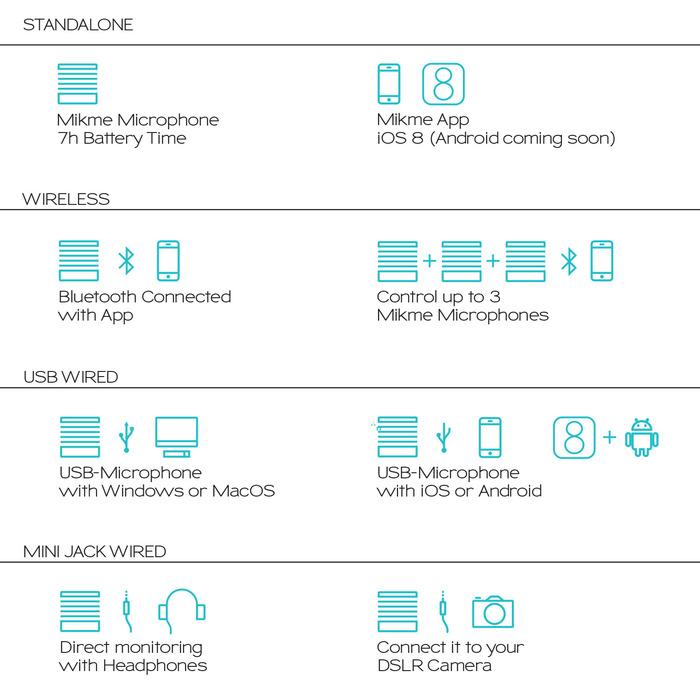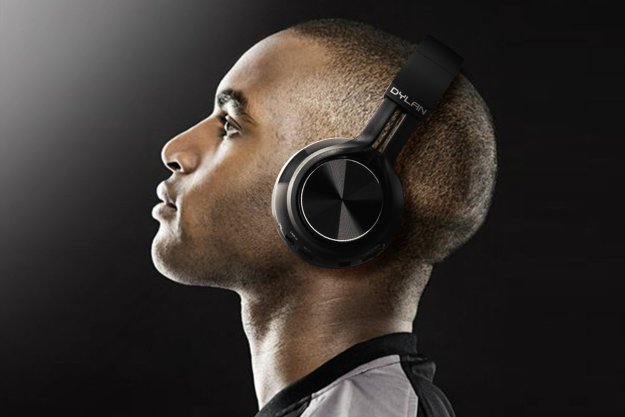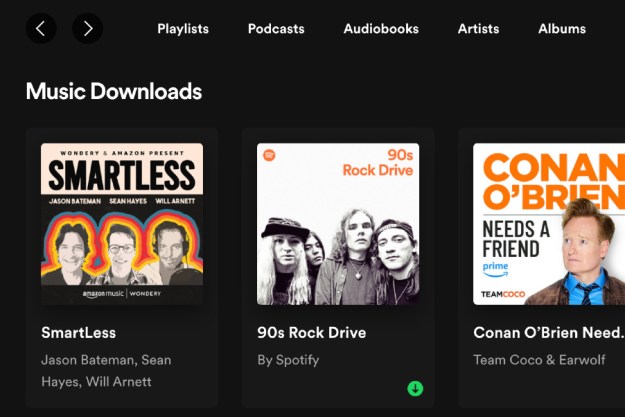One of the most vital aspects of fostering creativity is striking while the iron is hot. For musicians, that often means laying down some barely audible line of digital nonsense into a smartphone, resulting in little more than a feeble sketch of the idea. However, a new campaign on Kickstarter aims to make those scratchy home recordings a thing of the past thanks to a little black box called the Mikme.
Pronounced like the McDonald’s version of yourself (mick-me), this little wireless box of tricks is designed with utter simplicity in mind, allowing artists to focus on the music, not the gear. Simply pressing the top button begins a recording, capturing sound in “studio quality” resolution at up to 24bit/96kHz. With 8GB of internal storage, the device can hold up to 180 hours of audio in MP4 format, or 16 hours in higher resolution WAV files. Mikme’s rechargeable battery brags a claimed 7 hours of play time. But it doesn’t stop there.
Thanks to its accompanying iOS app (with Android on the way), the Mikme can sync to your wireless device via Bluetooth, allowing you to lay down up to 8 tracks per song, and you can also control up to three Mikmes at a time, opening up multiple recording configurations. The audio can be automatically saved on your phone, though it’s a good bet such recordings will be in lower resolution than what can be recorded natively to the device, due to the limitations of Bluetooth. The mic can also be connected to a computer via audio-compliant USB for use with a more advanced studio setup, offering a host of ways to play for impressive versatility.
The Mikme’s interior houses a gold-plated cardioid condenser capsule — the same kind of sonic receptacle you’ll find in studio mics commonly used for capturing high quality tracks for vocals, guitar, and a wide range of other instruments. And perhaps most intriguing, Mikme claims its capsule was designed by engineers formerly with AKG, one of the world’s leading studio microphone developers.

While the Mikme is designed for easy arrangement on virtually any surface, it’s also set up for mounting on regular mic stands, as well as offering a quarter-inch thread connection so you can substitute a camera tripod instead. In addition, the Mikme offers output via 3.5mm jack for low-latency monitoring, or to output sound to a DSLR for capturing better audio for videos.
We’re not sold on the mic as far as its promise of “studio quality” sound just yet, but we like what we heard from the short audio clips available on the Kickstarter page. More important, however, is what we didn’t hear: Both recordings are impressively quiet and clean, which is one of the major issues prevalent in most portable mics.
Even without a test drive, we can all but guarantee the Mikme will put your tiny smartphone mic to shame, and theoretically, its large condenser capsule should have no trouble outshining most other mics in its class, too, provided the wireless transfer of audio works as well as promised.
As of time of publication, there were still plenty of Early Bird Mikmes available, priced at $179. The mic is set to retail at $299. If you’re interested in upgrading your field recordings, you can find out more about the Mikme at its Kickstarter page now.


